(1563 products available)

















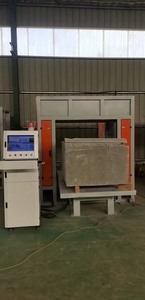
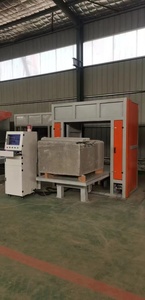













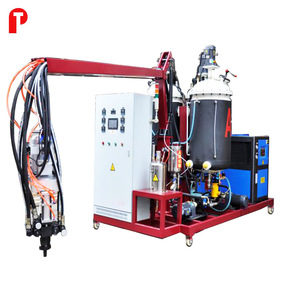


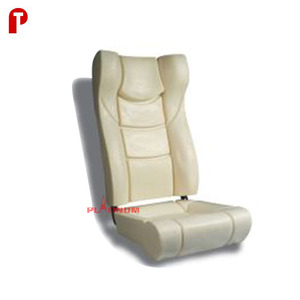












































































































































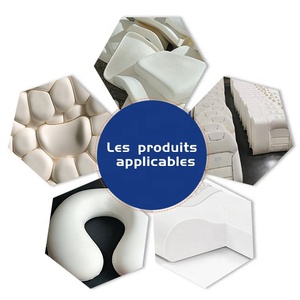





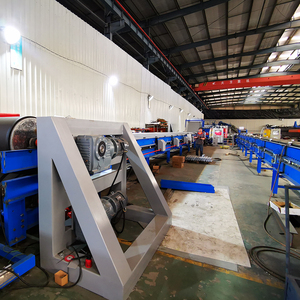
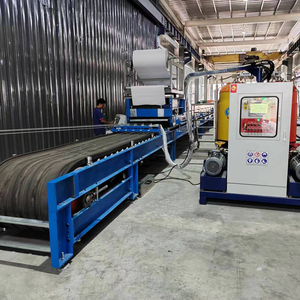









































A used pu foaming machine is a piece of equipment that produces polyurethane foam by applying heat, pressure, and chemical reactions to raw materials. Many types of used PU foaming machines are available for purchase.
PU spray foaming machine:
The used spray foam machine is often referred to as a spray used foam machine. This machine often comes in a portable package and sprays out liquid foam. The liquid that is sprayed out expands into a soft foam that fills empty spaces. It usually consists of an air compressor, fluid hose, proportioner, spray gun, and mixing tip. With this combination of equipment, the machine can spray out insulation that not only protects homes from the natural elements but also lowers energy costs.
Block foaming machine:
A block foaming machine is large-scale industrial equipment that produces massive blocks of foam. It uses a chemical reaction between two or more liquids to create as much foam as needed to fill any block. The used block foaming machine works by mixing the foam chemicals with water, which will then travel through a hose to an oblong-shaped mold or cavity. Once the chemical mixture is in the cavity, it will expand to fill out the entire space, and once it is fully expanded, it will harden into a foam block.
Egg tray foaming machine:
Egg tray foaming machines make the protective packaging that will hold eggs and prevent them from breaking. This machine will create a mixture of paper pulp and water, and the wet pulp will be formed into a tray using suction cups. Once the tray has formed, it will go through the drying process where it will harden and foam up.
Aside from egg trays, there are other trays that can be produced with an egg tray foaming machine, like electronic part trays, cups, and other foamed packaging products.
Used PU (polyurethane) foaming machines find application in several industries.
When purchasing a used foaming machine, buyers must get machines that can produce quality products within budget constraints. Buyers should first understand the specific characteristics and features of used PU foaming machines to avoid machines that have no utility to their businesses. When buyers understand the workings of a foaming machine, they will be in a better position to know what features they want from the machine.
Buyers should determine the capacity requirement before purchasing a used foaming machine. They should go through the production volume of their businesses and ascertain the kind of capacity needed to meet their production needs. Buyers should note that machines with higher capacities usually have larger foam mixing heads. The machine might be over-bulky if the capacity is small. In contrast, a machine with a lower capacity might not fulfill the business's needs. This can have an adverse effect on production efficiency.
With the many options available, it is vital that buyers evaluate the essential features of a foaming machine, such as the accuracy of the metering. For a business that needs to produce foamed items at a large scale, precise measuring is essential to ensure consistent production and high quality. Many automated used PU foaming machines will have high metering accuracy, which is a helpful feature for businesses.
It is also important that buyers check the condition of critical parts of the machine, such as the mixing head and pumps. Also, determine the maintenance and service history of the foaming machine. If available, get service records that verify that the foaming machine has been well-maintained. This will help buyers shortlist machines that are more likely to deliver optimal performance with minimal downtime.
Overall, buyers should also apply a set of standard requirements when choosing a used foaming machine. This includes seeking machines from reputable manufacturers, checking warranty and support availability, and considering the compatibility of the foaming machine with other equipment.
Q1: Is a used pu foam machine good for business production needs?
A1: This depends on the condition of the machine. A used machine in good condition can meet production needs. However, some checks will reveal if it is suitable for business use.
Q2: What checks will reveal if a used PU foaming machine is suitable for business use?
A2: First, the age of the machine is an important factor. Check how long it has been used. Next, check its maintenance history. Has it received regular maintenance? Check the operating capacity. Does it still deliver the same output? Finally, inspect the machine's most used parts to see if they are worn out or damaged.
Q3: What are some benefits of buying a used PU foaming machine?
A3: A used foaming machine costs less. It offers the same production capacity as a new machine. It also reduces the demand for new resources that goes into manufacturing new machines.
Q4: Which businesses will benefit from a used PU foaming machine?
A4: Start-ups looking for an affordable machine to begin operations will benefit. Also, established businesses looking to add more machines at a low cost will find a used machine ideal. Finally, manufacturers in the recycling industry can find foaming machines useful to extract recyclable foams.